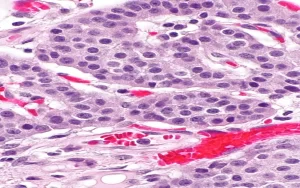The prevalence of obesity and overweight is increasing and has become an epidemic worldwide. Obesity has harmful effects on all body systems, including reproductive health. The prevalence of obesity in infertile women is high and it is clear that there is a relationship between obesity and infertility. The relationship between obesity and reproductive performance is well known. Overweight women are more prone to menstrual disorders and lack of ovulation. Decreased chances of fertility, lack of embryo implantation, increased risk of miscarriage and pregnancy complications are more common in these women.
Slimming methods, including surgery, can play a big role in losing weight and increasing the fertility chances of these women.

The relationship between obesity and reduced chances of fertility
Obese women are more prone to ovulation disorders due to the disturbance in the regulation of the hypothalamus-pituitary-ovary axis. In further explanation, obese women often have higher levels of circulating insulin, which is a known stimulus for increased ovarian androgen production. Due to the presence of excessive fat tissue, these androgens are converted into estrogen at a high speed, which leads to a negative feedback in the hypothalamus-pituitary-ovary axis and reduces ovarian stimulating hormones, which itself leads to a decrease in the chances of fertility in these women. Too much insulin is also evidently related to the development of polycystic ovary syndrome, which reduces the chances of fertility.
On the other hand, the increase in the level of androgens caused by the ovary leads to the formation of fat in the abdominal area, which increases insulin resistance, and with the increase in circulating insulin, stimulates the ovary to produce androgens and negative feedback in the hypothalamus-pituitary-ovary axis. .
Excess free fatty acids may also have a toxic effect on reproductive tissues, leading to cellular damage and a chronic inflammatory state. Altered levels of adipose tissue-derived hormones, such as leptin, can affect steroid production and directly affect the developing fetus.
In obese women, the uterine wall is also sensitive and may not be able to accept or protect the embryo well. Also, placenta abnormalities in these women are associated with higher rates of miscarriage, stillbirth and preeclampsia.
The effect of thinness on increasing the chances of fertility
As it turns out, weight loss reverses all the mechanisms mentioned above. Insulin resistance and circulating insulin levels decrease, and as a result, with less androgen production, the hypothalamus-pituitary-ovary axis is less inhibited and continues to produce ovarian-stimulating gonadotropins that are necessary for fertility.
On the other hand, with the reduction of free fatty acids and other inflammatory factors that are secreted due to excess fats in the blood, the level of inflammation decreases and the chances of conception, implantation and remaining a healthy fetus until the normal delivery time increase. In a word, thinness increases the chances of fertility in obese women.
Slimming methods to increase the chances of fertility
Regardless of the type of method, it is weight loss that increases fertility. However, the first and most accessible way to lose weight is diet and exercise. But the reality is that it is very difficult to stick to a diet in the long term and more importantly to prevent the weight lost from returning. Studies show that almost half of the weight lost is regained within a year of ending the diet and almost all of it is regained after 5 years. When excess weight is in the range of 5 to 10 kg, re-measurement for weight loss or weight maintenance can be achieved. But when the excess weight is several tens of kilograms, it will be very challenging to lose weight. In this situation, slimming surgery is used to increase the chance of fertility in women.
Who are the right candidates for weight loss surgery?
The following people are good candidates for weight loss surgery:
- Body weight more than 100 pounds or 45 kg above the ideal weight
- Body mass index (BMI) greater than 40
- Body mass index (BMI) greater than 35 with obesity-related complications, including high blood pressure, type 2 diabetes, sleep apnea, gallbladder disease, and infertility.
- Inability to lose weight and maintain it with conventional methods such as exercise and diet

Types of weight loss surgery
There are different types of weight loss surgery to increase fertility, and here we will review the most important types.
Roux-en-Y (roo-en-wy) gastric bypass
The surgeon then cuts the small intestine and sews part of it directly onto the pouch. Food goes into this small stomach pouch and then directly into the small intestine, which is sewn to it. In this method, food bypasses most of the stomach and the first part of the small intestine and instead enters directly into the middle part of the small intestine.
Get help from the best slimming specialist for advice in this field.
Sleeve gastrectomy
With a sleeve gastrectomy, about 80 percent of the stomach is removed from the body, leaving a long sleeve-like tube-like pouch. This small stomach cannot hold much food. It also produces less of the appetite-regulating hormone (ghrelin), which may reduce the desire to eat.
Among the advantages of this method, we can mention a significant weight loss and not changing the intestinal route. Sleeve gastrectomy requires a shorter hospital stay than other procedures.



